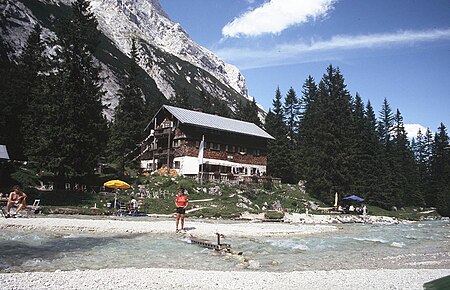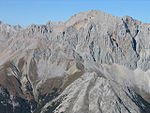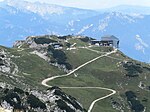Reintalanger Hut
1912 establishments in GermanyBuildings and structures completed in 1912Buildings and structures in Garmisch-Partenkirchen (district)Mountain huts in GermanyWetterstein

The Reintalanger Hut (1,366 m) is an Alpine Club hut in the Wetterstein Mountains at the head of the Reintal valley. The River Partnach has its source in the vicinity. West of the hut the valley floor climbs steeply up to the plateau of the Zugspitzplatt below Germany's highest mountain. The hut belongs to the Munich section of the German Alpine Club and the administrative district of Garmisch-Partenkirchen. It was built in 1912 and is a Category 1 hut. The house has 132 bedspaces and is managed from the end of May to mid-October.
Excerpt from the Wikipedia article Reintalanger Hut (License: CC BY-SA 3.0, Authors, Images).Reintalanger Hut
Schützensteig,
Geographical coordinates (GPS) Address External links Nearby Places Show on map
Geographical coordinates (GPS)
| Latitude | Longitude |
|---|---|
| N 47.40528 ° | E 11.03556 ° |
Address
Reintalangerhütte
Schützensteig 1
82467
Bavaria, Germany
Open on Google Maps











